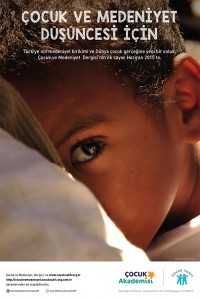Çocuklar, Çocukluk ve Sosyal Sermaye: Bağlantıların İncelenmesi
Bu makale çocukların sosyal sermaye ‘varlıklarını’ nasıl geliştirdikleri ve kullandıklarını incelemekte ve bu çerçevede çocukların aile, akran ve toplum bağlantılarına ışık tutan iki araştırma projesinden yararlanmaktadır. Gelişmekte olan sosyal sermaye veya sosyo-kapital literatüründe çocukların üzerinde yeterince durulmamıştır. Gerçekten de, literatürün büyük bölümünde çocuklar üzerinde yeterince durulmamış, var olan ağları nasıl algıladıkları ya da nasıl ek ağlar yarattıklarını ve bunları nasıl yönettikleri düşünülmemiş, sosyal sermaye “varlıklarının” çocuklara aktarımı konusu basit bir bakış açısı ile ele alınmıştır. Makalede Putnam, Coleman ve Bourdieu tarafından ileri sürülen sosyal sermaye kavramının içinde çocuk ve çocukluğun ele alınışı incelenecektir. Sosyal sermayenin en önemli özelliklerinden biri diğer sermaye türlerine dönüştürülebiliyor olmasıdır. Çocukların sosyal ağlarına odaklanmak aynı zamanda bu sosyal sermaye dönüşümünün irdelenmesini de kaçınılmaz kılacaktır
Anahtar Kelimeler:
Bourdieu, çocuklar, Coleman, Putnam, sosyal sermaye
Çocuklar, Çocukluk ve Sosyal Sermaye: Bağlantıların İncelenmesi
This article is concerned with exploring how children develop and utilize stocks of social capital. It draws on two research projects illustrating children’s family, peer and community networks. In the burgeoning literature on social capital, children’s accounts remain under-researched. Indeed most of the literature operates with a simplistic view of adults passing social capital assets on to children without a subsequent consideration of how children perceive and make use of existing networks and create and manage additional networks. The article will examine the limited treatment of children and childhood in the conceptualization of social capital put forward by Putnam, Coleman and Bourdieu. One of the most important attributes of social capital is its supposed ability to be converted into other forms of capital. A focus on children’s networks calls into question the ease with which social capital can be transformed into other types of capital
Keywords:
Bourdieu, children, Coleman, Putnam, social capital,
___
- Ambert, A. (1986) ‘The Place of Children in North American Sociology’, in P. Alder and P. Alder (eds) Sociological Studies in Child Development. Greenwich, CT: JAI Press.
- Bourdieu, P. (1986) ‘The Forms of Capital’, in J. Richardson (ed.) Handbook of Theory and Research for the Sociology of Education, pp. 241–58. New York: Greenwood Press.
- Bourdieu, P. (1998) Acts of Resistance. Against the New Myths of Our Time. Cambridge: Polity Press.
- Bourdieu, P. (1999) Distinction. A Social Critique of the Judgment of Taste. Cambridge, MA: Harvard University Press.
- Coleman, J. (1988) ‘Social Capital in the Creation of Human Capital’, American Journal of Sociology 94 (Supplement): S95–S120.
- Coleman, J. (1990) The Foundations of Social Theory. Cambridge, MA: Harvard University Press.
- Coleman, J. (1991) ‘Prologue: Constructed Social Organisation’, in P. Bourdieu and J. Coleman (eds) Social Theory for a Changing Society. Boulder, CO: Westview Press.
- Coleman, J. (1994) ‘Social Capital, Human Capital and Investment in Youth’, in A. Petersen and J. Mortimer (eds) Youth Unemployment and Society. Cambridge: Cambridge University Press.
- Daly, M. and M. Leonard (2000) Against All Odds: Family Life on a Low Income in Ireland. Dublin: Combat Poverty Agency.
- Field, J. (2003) Social Capital. London: Routledge.
- Frones, I. (1994) ‘Dimensions of Childhood’, in J. Qvortrup, M. Bardy, G. Sgritta and H. Wintersberger (eds) Childhood Matters. Social Theory, Practice and Politics, pp. 145–75. Aldershot: Avebury.
- Hobbs, S. and J. McKechnie (1997) Child Employment in Britain. Scotland: The Stationery Office.
- James, A. and A. Prout (1997) ‘A New Paradigm for the Sociology of Childhood? Promise and Problems’, in A. James and A. Prout (eds) Constructing and Reconstructing Childhood. London: RoutledgeFalmer.
- Jenkins, R. (1988) ‘Discrimination and Equal Opportunity in Employment: Ethnicity and Race in the United Kingdom’, in D. Gallie (ed.) Employment in Britain. Oxford: Blackwell.
- Leonard, M. (1994) Informal Economic Activity in Belfast. Aldershot: Avebury.
- Misztal, B. (2000) Informality: Social Theory and Contemporary Practice. London: Routledge.
- Morris, L. (1985) ‘Local Social Networks and Domestic Organisation’, The Sociological Review 33: 327–42.
- Morrow, V. (1999) ‘Conceptualising Social Capital in Relation to the Well-being of Children and Young People: A Critical Review’, The Sociological Review 47(4): 744–65.
- O’Donnell, C. and L. White (1998) Invisible Hands: Child Employment in North Tyneside. London: Low Pay Unit.
- Portes, A. (1998) ‘Social Capital: Its Origins and Applications in Modern Sociology’, Annual Review of Sociology 22: 1–24.
- Portes, A. and P. Landholt (1996) ‘The Downside of Social Capital’, The American Prospect 26 (May– June): 18–21.
- Putnam, R. (1995) ‘Bowling Alone: America’s Declining Social Capital’, Journal of Democracy 6(1): 64–78.
- Putnam, R. (2000) Bowling Alone: the Collapse and Revival of American Community. New York: Simon and Schuster.
- Qvortrup, J. (1994) ‘Childhood Matters: An Introduction’, in J. Qvortrup, M. Bardy, G. Sgritta and H. Wintersberger (eds) Childhood Matters. Social Theory, Practice and Politics, pp. 1–24. Aldershot: Avebury.
- Reay, D. (2002) ‘Gendering Bourdieu’s Concept of Social Capitals? Emotional Capital, Women and Social Class’. Paper given to Feminists Evaluate Bourdieu Conference, University of Manchester, October.
- Sayer, A. (1999) ‘Bourdieu, Smith and Disinterested Judgement’, The Sociological Review 47(3): 403–32.
- Skeggs, B. (2002) ‘Exchange Value and Affect: Against Polite Sociology’. Paper presented at the Feminists Evaluate Bourdieu Conference, University of Manchester, October.
- Skeggs, B. (2004) Class, Self and Culture. London: Routledge.
- Walter, E.V. (1976) ‘Dreadful Enclosures: Detoxifying an Urban Myth’, Archives Europeenes de Sociologie 17: 151–9.
- Winter, I. (2000) ‘Towards a Theorised Understanding of Family Life and Social Capital’, Australian Institute of Family Studies, Working Paper No. 21: 1–18.
- ISSN: 2458-8431
- Başlangıç: 2016
- Yayıncı: Çocuk Vakfı
Sayıdaki Diğer Makaleler
Çocukluk Sosyolojisi İçin Evrensel Giriş
Batı'da Çocukluk Sosyolojisi Çalışmaları Tarihi
Berry Mayall ile Çocukluk Sosyolojisi Tarihi Kitabı Hakkında Röportaj
Berry MAYALL, Türkan Fırıncı ORMAN
“Çocuk ve Çocukluk” Kavramının Tarihsel Süreçte Değerlendirilmesi
Çocukluk Çalışmaları: Sürdürülebilir Bir Paradigma mı?
Kuşaklararasılık ve Kültürel Değişme
Yeni Sosyolojilere Doğru İmkân ve Fırsatlar: Bir Disiplin Olarak Çocukluk Sosyolojisi
Değişen Çocuk ve Çocukluk Biraz Tarih ve Felsefe Biraz Sosyoloji ve Çocukluk Sosyolojisi
Çocuklar, Çocukluk ve Sosyal Sermaye: Bağlantıların İncelenmesi
Bedene Yönelik Müdahalede Şiddet, Travmalar ve Çocukluk: Sosyolojik Bir İnceleme
